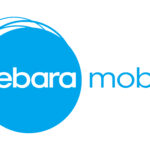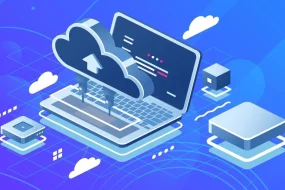In the fast-paced digital landscape, businesses are constantly seeking ways to enhance their user experience and make the onboarding process seamless. Whether it’s welcoming new employees, customers, or clients, a smooth onboarding experience can set the stage for a successful journey. In this comprehensive guide, we delve into the art of “Seamless Onboarding” and how it can transform your interactions with users. Let’s embark on this journey to optimize the onboarding process and leave a lasting impression.
What is Seamless Onboarding?
Seamless onboarding is the process of introducing individuals to a new platform, service, or environment in a way that minimizes friction and maximizes their understanding and engagement. It is the bridge that connects first impressions with long-term relationships, whether in a professional or customer-centric context.
Why is Seamless Onboarding Crucial?
Effective onboarding isn’t just a “nice-to-have”; it’s a strategic necessity. It can significantly impact user retention, satisfaction, and overall success. A well-executed onboarding process can lead to:
Reduced Churn: Users are less likely to abandon your platform.
Faster Adoption: Users can quickly harness the full potential of your product.
Higher Engagement: Users feel more connected and engaged.
Key Components of Seamless Onboarding
Creating a seamless onboarding experience requires a multifaceted approach. Here are the key components to consider:
Personalization
Personalization involves tailoring the onboarding experience to the individual. By understanding the user’s specific needs and preferences, you can guide them effectively, making them feel valued.
Clear Communication
Transparency and clear communication are paramount. Users should know what to expect and how to navigate the platform. Clarity reduces confusion and frustration.
Interactive Onboarding
Interactive elements such as product tours, tutorials, and quizzes can make the onboarding process engaging and educational. Users learn by doing, which enhances retention.
Support and Assistance
Providing access to support resources and assistance, such as chat support or FAQs, can be a lifeline for users facing challenges during onboarding. Prompt assistance can prevent users from dropping off.
Feedback Mechanisms
Collecting user feedback during onboarding and acting on it can lead to continuous improvement. Feedback helps in identifying pain points and optimizing the process.
Implementing Seamless Onboarding in Practice
Now that we’ve explored the core components of seamless onboarding, let’s see how to implement them effectively.
Understanding User Personas
Start by creating user personas. This involves defining different user segments and understanding their needs, goals, and pain points. Tailor your onboarding process to address these unique characteristics.
Designing a User-Friendly Interface
A clean, intuitive interface with a clear user flow is essential. Ensure that users can navigate your platform with ease, and use responsive design for a seamless experience across devices.
Gamification
Gamify the onboarding process by introducing challenges, rewards, and achievements. This can boost user engagement and make the learning process more enjoyable.
Automation
Leverage automation tools to streamline the onboarding process. This could include automated emails, reminders, or user tracking to identify potential bottlenecks.
Continuous Improvement
Seamless onboarding is an ongoing effort. Regularly analyze data and user feedback to fine-tune the process and adapt to changing user needs.
Common Mistakes to Avoid
In the pursuit of seamless onboarding, there are common mistakes that can hinder your efforts. Some of these include:
Overwhelming Users: Bombarding users with too much information at once can be counterproductive. Gradual guidance is often more effective.
Neglecting Mobile Users: In a mobile-first world, ensuring a seamless onboarding experience on mobile devices is crucial.
Ignoring Feedback: Failing to listen to user feedback and make improvements can lead to a stagnant onboarding process.
Final Words
Seamless onboarding is the linchpin of success in today’s competitive landscape. A well-crafted onboarding process can not only attract users but also retain them. It bridges the gap between first impressions and long-lasting relationships. So, make your onboarding process an experience to remember and leave your users delighted.
Commonly Asked Questions
1. What is the primary goal of onboarding?
The primary goal of onboarding is to introduce users to a new platform, service, or environment in a way that minimizes friction and maximizes their understanding and engagement. It aims to set the stage for a successful and satisfying user journey.
2. How can personalization enhance the onboarding process?
Personalization in onboarding involves tailoring the experience to individual users’ needs and preferences. It can make users feel valued and guide them effectively, leading to a more positive onboarding experience.
3. What role does feedback play in seamless onboarding?
Feedback is crucial in seamless onboarding as it helps in identifying pain points and areas for improvement. Collecting and acting on user feedback can lead to continuous refinement of the onboarding process.
4. Why is mobile-friendly onboarding essential?
In a mobile-first world, ensuring a mobile-friendly onboarding experience is vital. It caters to the growing number of users who access platforms and services through mobile devices, enhancing their experience and satisfaction.
5. How can automation streamline the onboarding process?
Automation tools can simplify onboarding by sending automated emails, reminders, and tracking user progress. This reduces manual tasks and ensures a smoother and more efficient onboarding experience.
Advertisement




